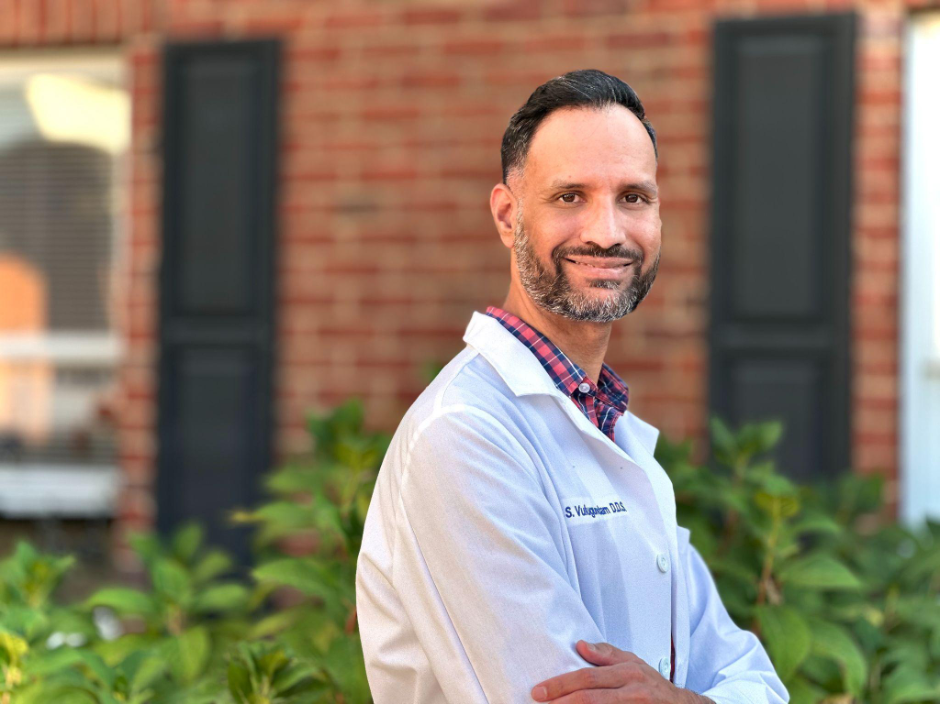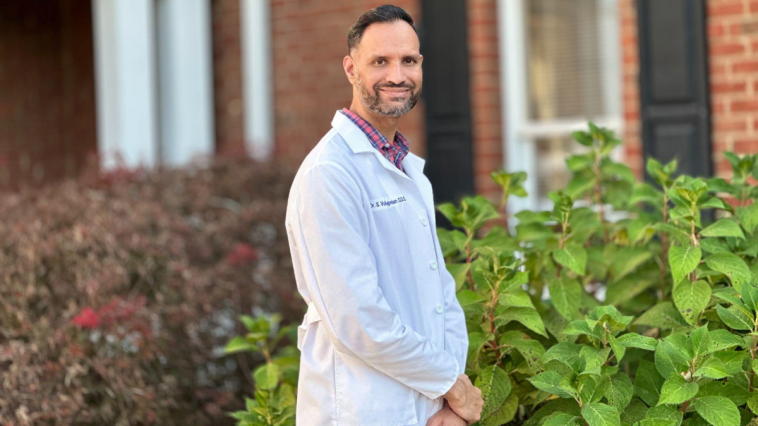In healthcare, dentistry stands out as an essential field, significantly impacting people’s lives and overall well-being. The link between dental and general health has gained more recognition lately, highlighting the need for improved access in underserved communities. Access to quality dental care in these areas is a pressing challenge, underlining a crucial gap in healthcare.
Dr. Srikar Vulugundam, a general dentist with 23 years of experience, exemplifies the blend of skill, empathy, and commitment needed in this field. His journey from providing care in rural India to leading initiatives in underserved American communities underscores his dedication to accessible dental care. Beyond clinical expertise, Dr. Vulugundam’s role as an educator and public health leader showcases his comprehensive approach to dentistry, addressing broader healthcare needs.
In a recent conversation with Dr. Srikar Vulugundam, we explored his multifaceted career, highlighting his remarkable impact on communities in need. More than just providing dental treatment, Dr. Vulugundam is a catalyst for change in how dental health is perceived and approached. His commitment is evident in his public health initiatives and educational programs that prioritize preventive care and knowledge dissemination.
Discover how his dedication to healthcare accessibility and education is reshaping not only smiles but the landscape of community health.
We’re delighted to have you with us, Dr. Vulugundam. Could you share what initially motivated you to focus on serving underserved communities, especially during your time in rural India?
Growing up in a family of healthcare professionals, I witnessed my parents serving rural communities in India firsthand. This deeply influenced me. During my education and internship at dental school, my initial exposure to the critical need for dental services in rural areas came through my volunteer activities with an outreach team. This experience highlighted the dire need for dental care in underserved rural communities in India.
Having served both in rural areas of India and remote communities in the US, what similarities and differences have you observed in the dental care challenges faced by these communities?
In both India and the United States, there are similar challenges in providing dental care, though there are minor differences stemming from the organizational structures of their respective governing bodies. Common issues in both countries include the affordability of dental care, access to transportation and health services, and a general lack of awareness and knowledge about dental health issues.
While both nations have well-organized plans to provide healthcare access, the USA stands out with its provision of multiple federal grants. These grants support making healthcare accessible, particularly through federally qualified health center programs.
Based on your experience, what are the top three barriers to dental healthcare access in underserved communities, and how have you strategized to overcome them?
For me, the top three barriers are the following:
- Affordability: Access to federal grants significantly reduces the financial burden on patients regarding their dental care expenses.
- Transportation: State and federal programs, when available, assist patients with public transportation for their dental appointments, easing access issues.
- Lack of Awareness: Through health fairs and outreach events conducted by health centers, we implement outreach and education programs. These initiatives are crucial in informing the community about the importance of regular dental visits and ongoing care, thereby enhancing awareness of dental health.
Can you share a particular experience or success story from your leading role in Federally Qualified Health Centers (FQHCs) that had a significant impact on improving access to dental care?
From a clinical perspective, my chair-side interviews and health education have significantly influenced numerous patients, particularly teenagers, in improving their oral hygiene and making better dietary choices. This, in turn, has led to the enhancement of their oral and general health.
A memorable instance involved a young adult who, after receiving a comprehensive dental consultation, counseling, and treatment plan for extensive dental caries and early-stage gum disease, was profoundly influenced by the educational material provided during his appointment. His commitment to the dental care plan over the following months resulted in him being disease-free with exceptional oral hygiene in the subsequent years at our health center.
He revealed that he hadn’t received dental care earlier due to lack of access and education, saying, “No one ever cared enough to provide the educational material and services your practice did.” Such feedback deeply resonates with me, affirming the impact of my profession and my role as a healthcare provider.
From an administrative perspective, developing policies, protocols, and standards for providing safe, quality dental services has been pivotal. Assuring the community about the precautions we take to maintain a safe dental environment has significantly improved access to dental care.
Offering dental services at discounted fees can be challenging from a financial perspective. How do you balance the need to sustain your practice while ensuring the affordability of services to these communities?
Although federal grants provide substantial financial support to our practice, our team’s commitment goes beyond monetary considerations. We treat every patient, whether a walk-in or a scheduled visit, with the utmost sincerity and respect. Due to our discounted fee structure, we have set our productivity goals higher than those typical in a “for-profit” clinic to balance the financial aspects. Nonetheless, thanks to our outstanding team approach, we consistently meet our productivity targets and maintain our ability to serve the community effectively.
Could you share an anecdote or feedback from a community member that deeply resonated with you and reinforced your commitment to serving these underserved areas?
There have been numerous instances where members of the community have recognized and appreciated my services in dental public health in various public settings. A memorable occasion occurred during a “National Health Center Recognition Week.” A community representative approached me to discuss several clinical cases that community members using our services had brought to her attention. She highlighted how these situations were professionally managed through my expertise and dedication to dental public health. She personally thanked me for my contributions at the health centers. It was at that moment I truly realized the extensive impact of my work in a dental public health setting.

How do you collaborate with other healthcare providers, NGOs, or governmental bodies to improve dental health access and infrastructure in underserved communities?
At the health centers, we’ve established a collaborative model with three regional hospital systems to enhance access to dental services through their Emergency Room departments. We hold regular meetings, known as huddles, to inform ER staff about our dental services. This ensures that patients with dental issues are directed to us for appropriate care. This initiative has markedly improved access to dental services for community members at our health centers.
Our outreach efforts extend to volunteering at community health fairs, where we educate attendees about our services. This direct interaction provides community members with a point of contact for their healthcare needs. Our health centers are the only ones in the area offering services on a discounted fee schedule. Our active participation in local health fairs plays a significant role in educating the community and guiding them to our services.
Looking ahead, what initiatives or projects do you have in mind to further expand or enhance dental care access in underserved regions?
Moving forward, our plan involves collaborating with local dental associations and governing bodies to advocate for the dental needs of our community at both state and national levels. Our administrative team members will actively participate in this process, pushing for the inclusion of public health dental services in all healthcare policies. We also aim to educate policymakers about the vital role of oral health in the general health and well-being of our community.
Additionally, we have initiatives underway to collaborate with Rutgers University. Our goal is to educate dental students at federally qualified health centers, raising awareness about the importance of public health dentistry today. This initiative is designed to encourage current dental students to consider future job opportunities in public healthcare settings. Ultimately, this will help create a pool of healthcare professionals who are prepared and willing to work in federally qualified health centers.
Concluding, Dr. Srikar Vulugundam’s career exemplifies a profound dedication to enhancing dental healthcare in underserved communities. His blend of clinical excellence and strategic policy development is shaping a future where quality dental care is accessible to all.
Dr. Vulugundam’s efforts not only improve individual health outcomes but also pave the way for broader, long-lasting changes in public health.




